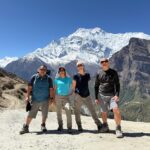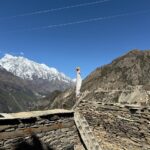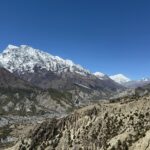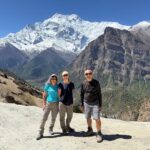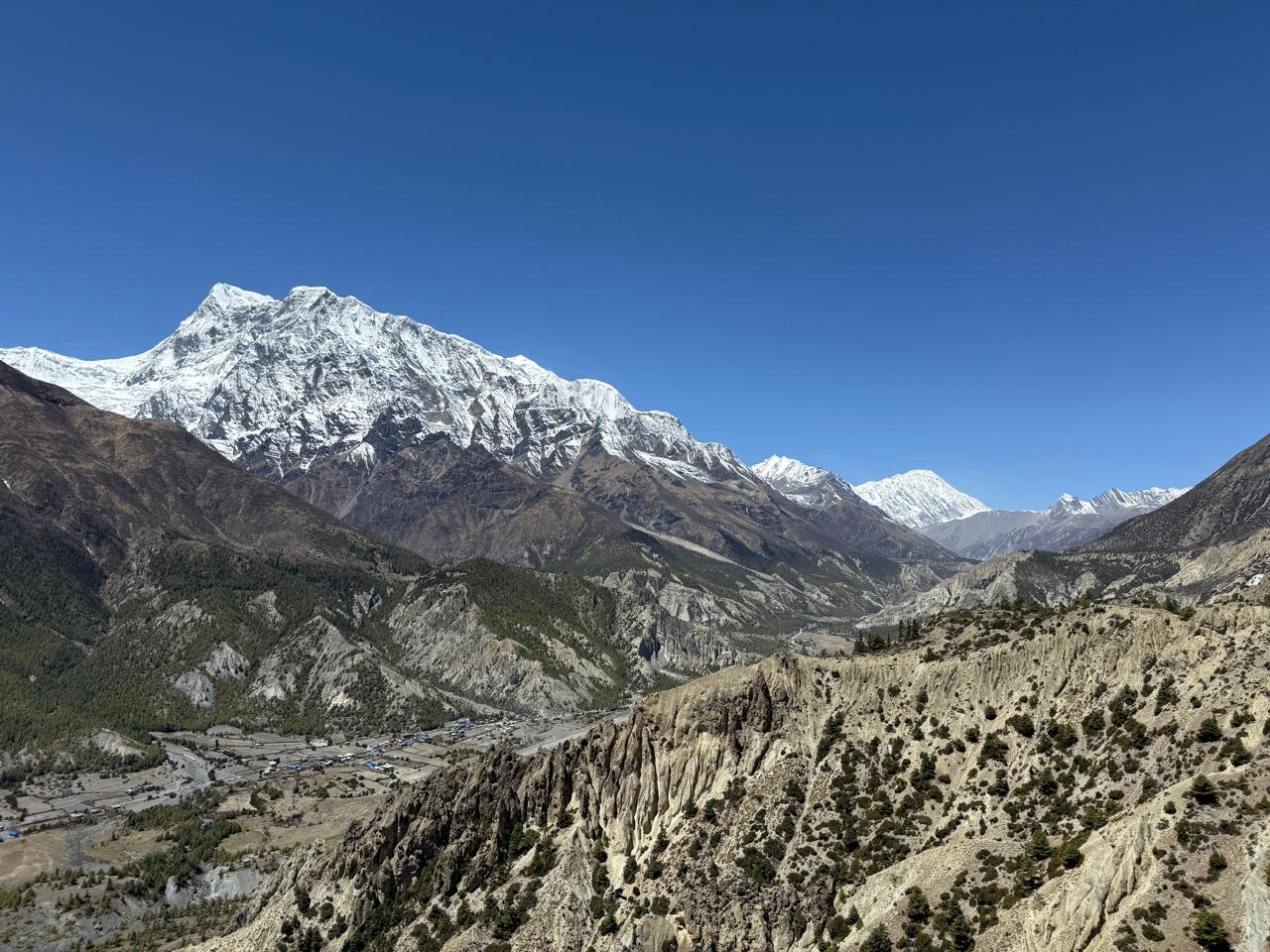
How Hard Is the Annapurna Circuit Trek?
The Annapurna Circuit Trek is often described as one of the world’s most beautiful long-distance hikes — and it absolutely deserves that reputation. But if you’re wondering, “How hard is the Annapurna Circuit Trek?”, you’re asking the right question before committing to this adventure.
In this article, we’ll break down the physical demands, mental preparation, altitude challenges, and give you smart tips to help you succeed. Whether you’re an experienced hiker or a passionate first-timer, understanding the difficulty of the Annapurna Circuit is essential for a safe and rewarding journey.
How Difficult Is the Annapurna Circuit Trek?
The Annapurna Circuit Trek is considered moderate to challenging, but it’s achievable for most trekkers with reasonable fitness and the right mindset.
You’ll trek between 160 to 230 kilometers over 10 to 20 days, depending on your route. Each day involves 5 to 8 hours of walking across a variety of terrains — from subtropical forests and terraced fields to alpine deserts and snow-covered mountain passes.
The most challenging section is crossing the Thorong La Pass at 5,416 meters (17,769 feet), the highest point of the trek. Thin air, cold temperatures, and long ascents make this day both the most difficult and the most rewarding.
In short:
-
Physical Challenge: Medium to High
-
Mental Challenge: Medium
-
Altitude Challenge: High
Key Physical Demands on the Annapurna Circuit Trek
1. Long Hiking Days
Expect to walk 10–20 kilometers per day depending on your itinerary. Some days include gradual ascents, while others feature steep climbs and descents.
Tip: Train your body by doing regular long hikes before your trip. Focus on building endurance rather than speed.
2. Altitude Gain
You’ll ascend from around 800 meters (Besisahar) up to over 5,400 meters (Thorong La).
Higher altitudes mean lower oxygen levels, making every step feel heavier and breathing harder.
Tip: Include stair climbing, hill hikes, and weighted backpack training in your preparation to simulate the trek’s physical demands.
3. Temperature Extremes
The Annapurna Circuit covers multiple climate zones. In one day, you might experience hot sun in the morning and icy winds by evening.
Tip: Learn the art of layering clothing to adapt quickly to changing weather conditions.
Altitude Challenges and How to Deal With Them
Altitude is one of the biggest hurdles on the Annapurna Circuit Trek. Symptoms of altitude sickness — headaches, nausea, dizziness, and fatigue — can start as low as 2,500 meters (8,200 feet).
Here’s how to tackle it smartly:
1. Acclimatization Days
Include at least one or two rest days in higher villages like Manang (3,519m). These rest days allow your body to adjust naturally to the thinner air.
Tip: On acclimatization days, take “active rests” — light hikes to higher elevations and return to sleep lower (“climb high, sleep low” strategy).
2. Walk Slowly
Speed kills at altitude. Even if you feel energetic, maintain a slow, steady pace. Your body needs time to adjust.
Tip: Walk at a conversational pace, breathe deeply, and don’t rush to reach the next stop.
3. Stay Hydrated
Drink plenty of water — at least 3 to 4 liters daily. Dehydration increases the risk of altitude sickness.
Tip: Bring electrolyte powders to mix with water for better hydration.
4. Recognize Symptoms
If you experience severe symptoms like extreme fatigue, confusion, or persistent vomiting, descend immediately. Ignoring symptoms can be life-threatening.
Mental Preparation for the Annapurna Circuit Trek
Physical fitness will get you far, but mental resilience is equally important.
1. Embrace the Unexpected
Weather changes, tired legs, basic tea houses, and cold showers are part of the adventure. Staying positive and flexible is crucial.
Tip: Focus on the beauty around you rather than discomforts.
2. Celebrate Small Victories
Crossing a suspension bridge, reaching a village, or completing a long climb are all milestones. Celebrate them!
Tip: Set small goals each day instead of focusing solely on the final destination.
3. Find Your Trekking Rhythm
Some trekkers love chatting with fellow hikers, others prefer solo reflection. Find what keeps you motivated and energized.
Best Time to Tackle the Annapurna Circuit Trek
Choosing the best season for trekking in Nepal can make your trek easier and more enjoyable.
-
Spring (March–May):
Mild temperatures, clear skies, and rhododendron blooms make spring a favorite. -
Autumn (September–November):
Post-monsoon clarity gives breathtaking mountain views. Crowds are higher, but so is the magic.
Tip: Avoid trekking in monsoon season (June–August) due to heavy rain and slippery trails, and winter (December–February) unless you’re prepared for snow and extreme cold.
Essential Tips to Make the Annapurna Circuit Easier
-
Train Before You Go:
Start hiking with a weighted pack at least 8–12 weeks before your trip. -
Pack Smart:
Carry only essentials. Keep your backpack under 12–15 kilograms. -
Eat Well:
Stick to high-carb, easy-to-digest meals like dal bhat (traditional Nepali rice and lentil dish). -
Stay Warm:
Bring a four-season sleeping bag rated for cold temperatures. -
Use Trekking Poles:
Poles reduce strain on knees, especially on long descents. -
Get Insurance:
Make sure your travel insurance covers trekking up to 6,000 meters and helicopter evacuation. -
Listen to Your Body:
Never push through severe fatigue or signs of altitude sickness.
Final Thoughts: Is the Annapurna Circuit Trek Worth It?
The Annapurna Circuit Trek is a challenging journey — but it’s absolutely worth every step.
Yes, there are hard days. Yes, your muscles will ache. But the sense of achievement, the humbling majesty of the Himalayas, and the friendships formed along the way are unlike anything else on Earth.
Thousands of first-time and experienced trekkers complete the Annapurna Circuit every year — and with good preparation, smart trekking practices, and the right mindset, so can you.
So lace up your boots, pack your spirit of adventure, and get ready to discover the beauty of trekking in Nepal.
The mountains are calling, and they are waiting for you.


